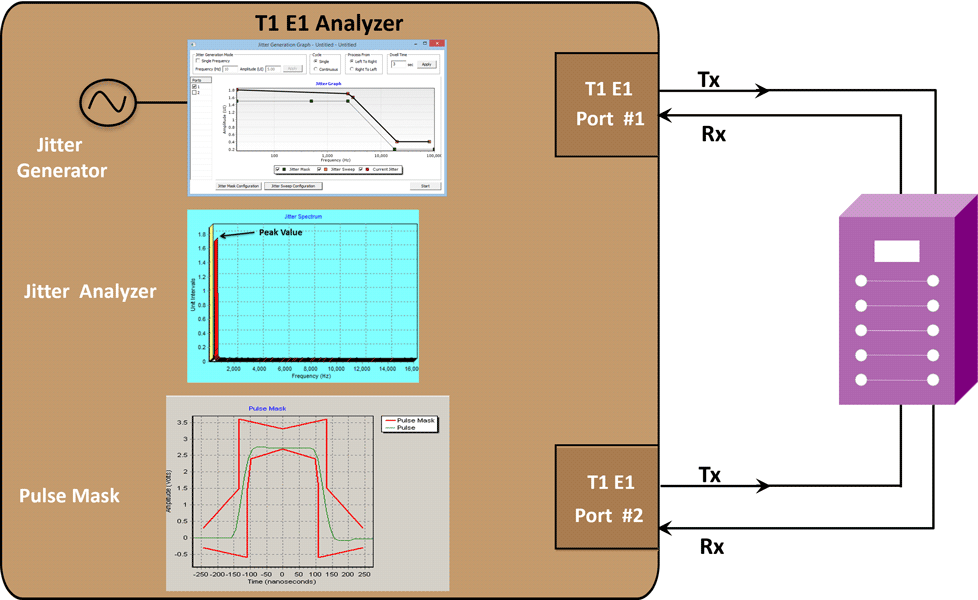Jitter Generation on T1 E1 Lines

Gaithersburg, Maryland, USA – September 19, 2013- GL Communications Inc announced today its Jitter Generation Software for T1 E1 Lines.
Speaking to reporters, Mr. Vijay Kulkarni, the CEO of the company said, “When a signal traverses a network, the jitter generated by a DUT becomes the input jitter to the next part of the network. If this jitter is amplified, it can exceed the jitter tolerance of the subsequent DUT. In this way, excessive jitter may accumulate and cause errors as the signal progresses through the network equipment.”
He added, “It is quite common for T1 E1 signals, within a central office environment or an enterprise telecom room, to NOT meet pulse mask requirements due to interference, too long or short cable lengths, improper impedances, or simply poor transmitter design. In such cases, jitter measurement & pulse mask compliance is very useful in diagnosing problems. The jitter and pulse mask compliance test capability is available in GL's Dual T1 E1 Express (PCIe) Boards, Universal T1 E1 Boards, and tProbe™ T1 E1 Analyzer platforms.”
Mr. Kulkarni further added, “GL’s Pulse Shape Measurement software can determine if the pulse shape fits within a “pulse mask” as specified by standards ITU G.703 and ANSI T1.102-1993. The software is available in both visual and tabular formats. Tabular formats are convenient for automation and scripted test environments.
GL’s Jitter Measurement software allows one to accurately measure jitter associated with a incoming T1 E1 signals. It also allows evaluation of the jitter on either a tick-by-tick or a cumulative basis. In addition to these, the application recognizes the very slow variations in a clock signal (below 1 Hz), and the Frequency Offset or Deviations in clock rates. This application in conjunction with GL’s Jitter Generation application can be used to test jitter transfer function to confirm that there is no amplification of jitter by network elements (NEs) in the transmission system.
GL’s Jitter Generation software has been developed to generate a jittered output T1 E1 signal with user-selected frequency and amplitude. It is suitable for testing jitter tolerance and compliance with standards such as G.823.”
Important Features
- Generates intrinsic jitter without any error as per G.823 standards
- Generates user-defined jitter value against an input jitter tolerance mask to test DUTs capability to tolerate large amounts of generated jitter.
- In conjunction with Jitter Measurement provides peak-to-peak jitter value for a given frequency at the system output
- Evaluate the jitter in real-time on either a tick-by-tick or a cumulative basis
 Back to Press Releases Index Page
Back to Press Releases Index Page